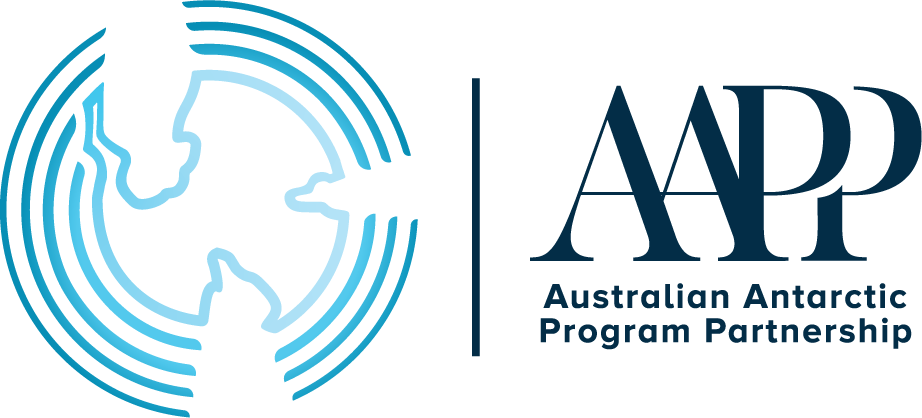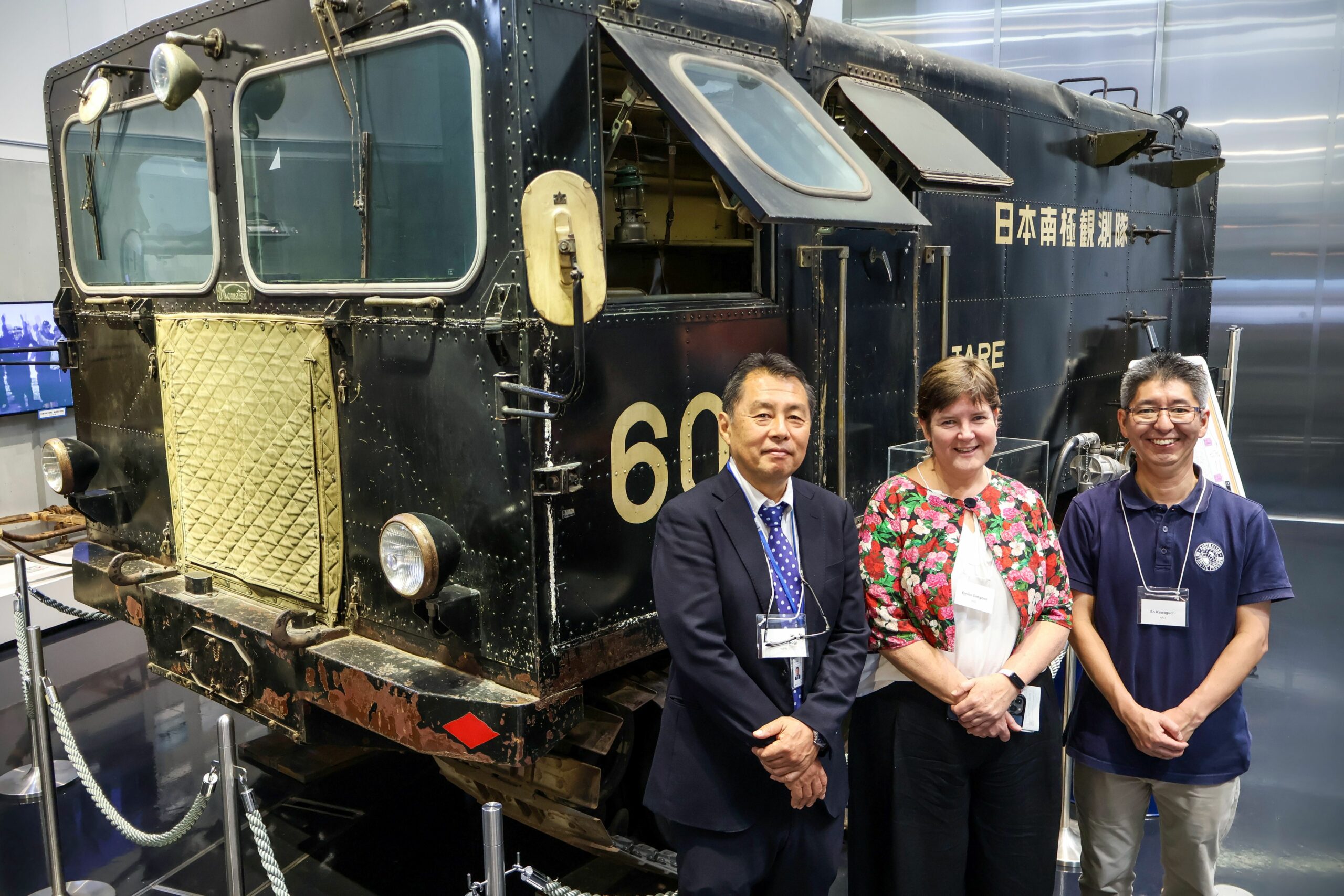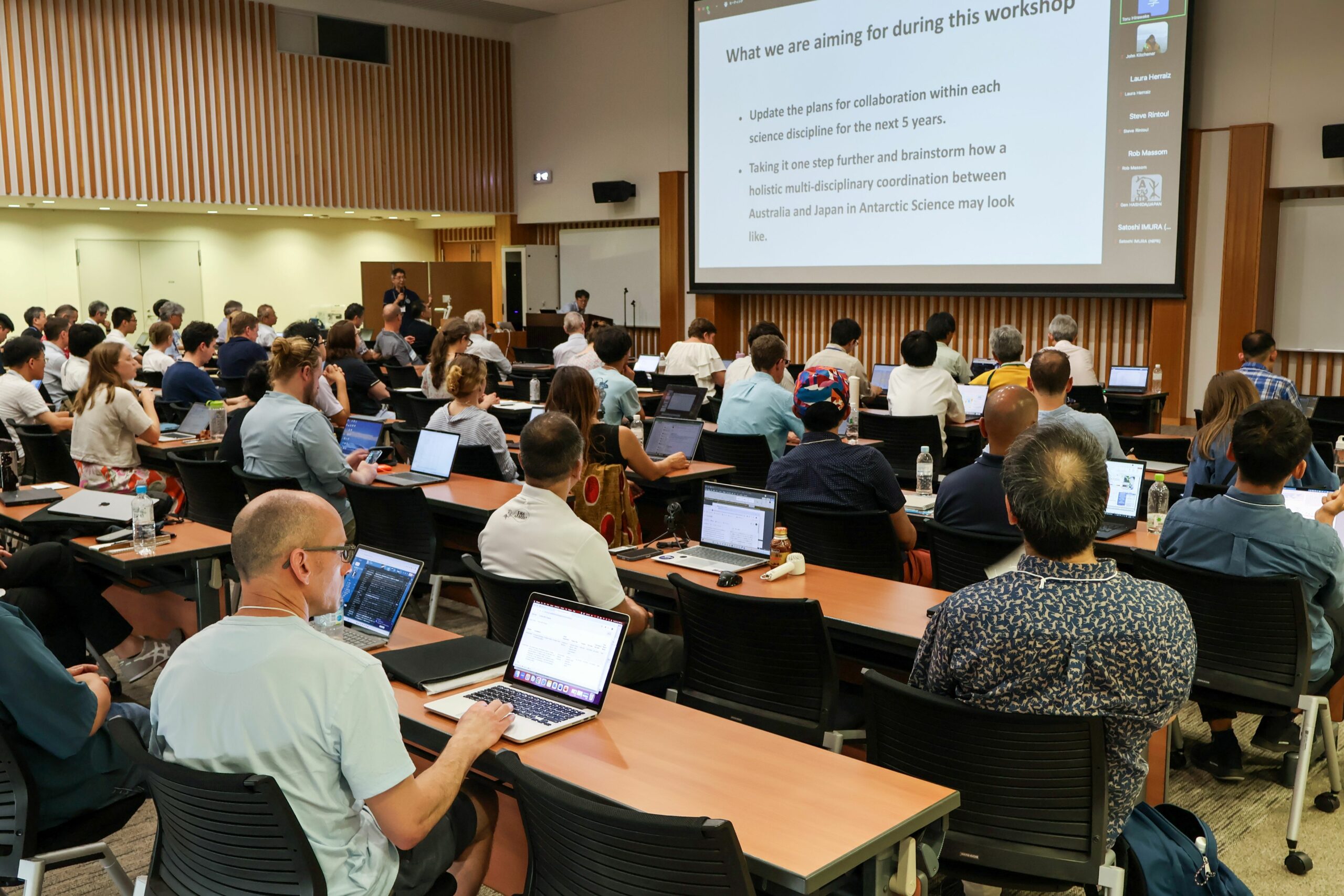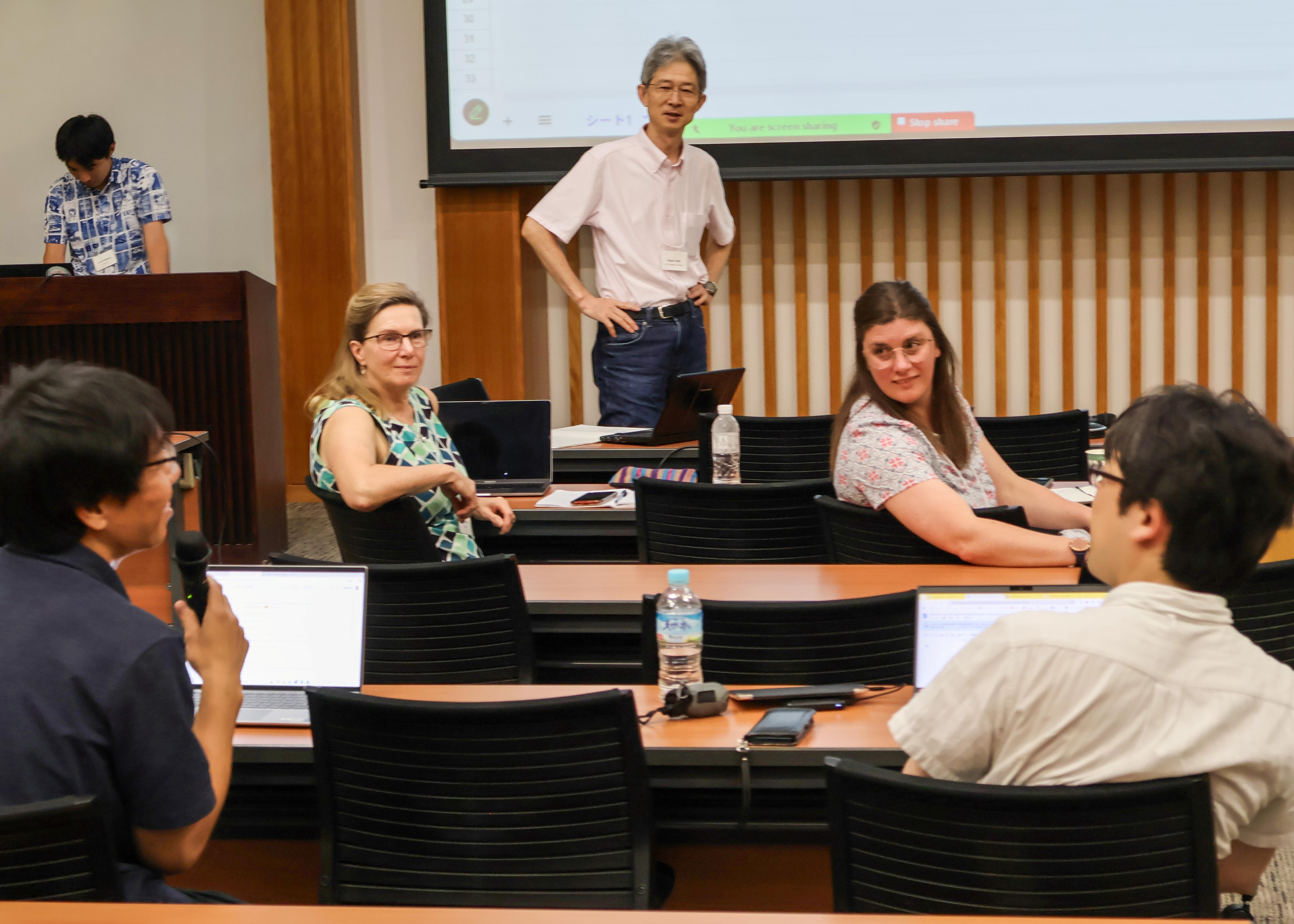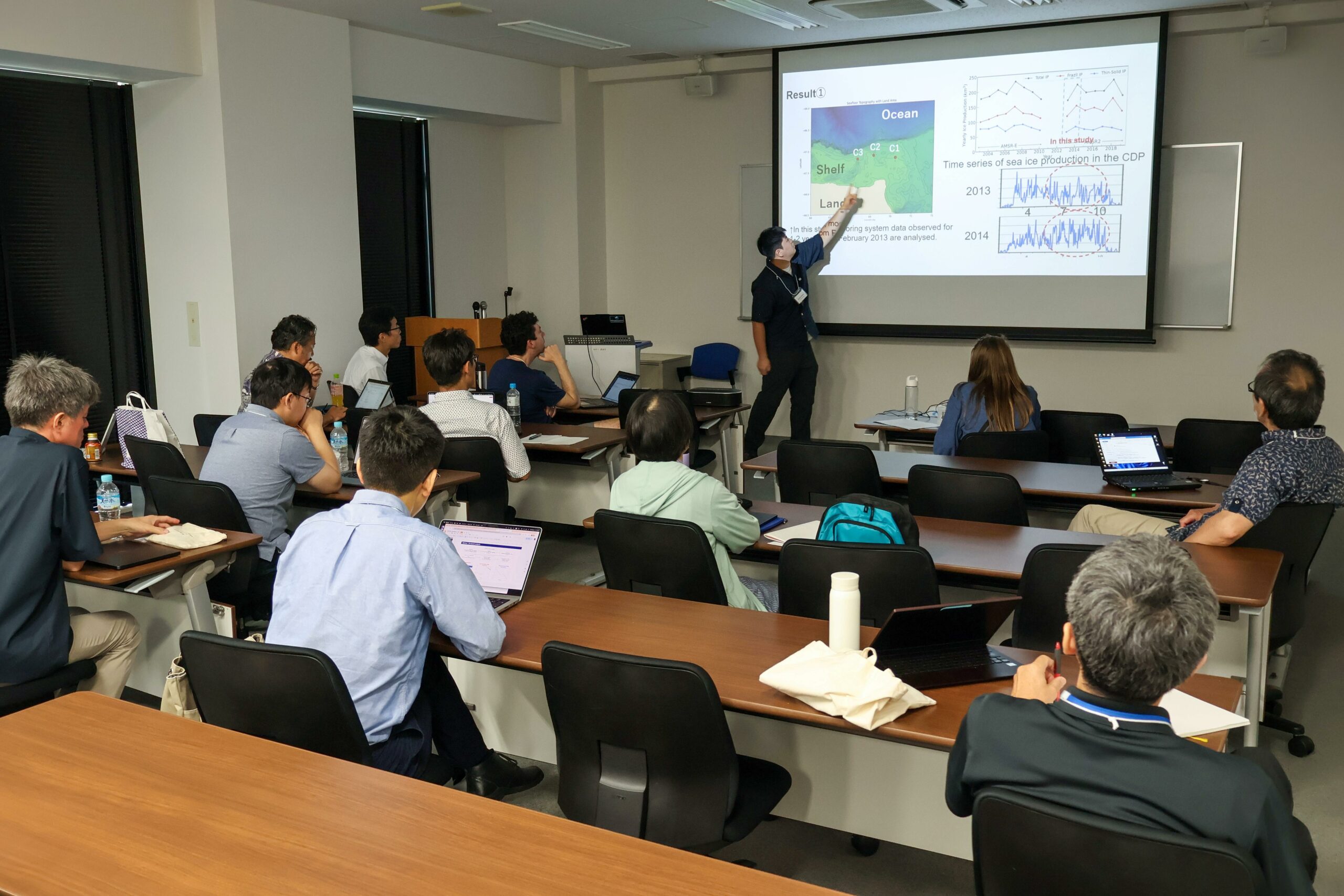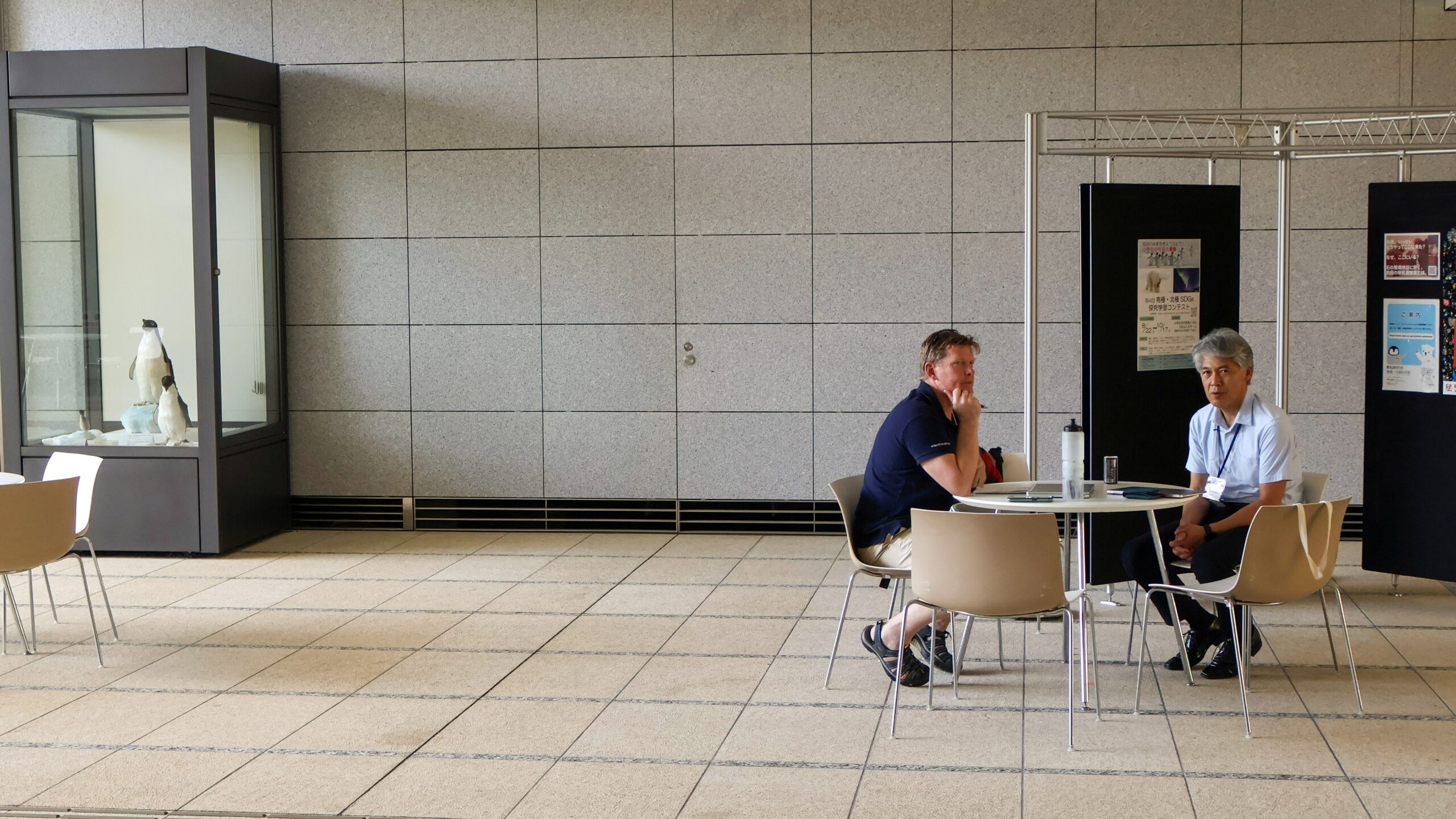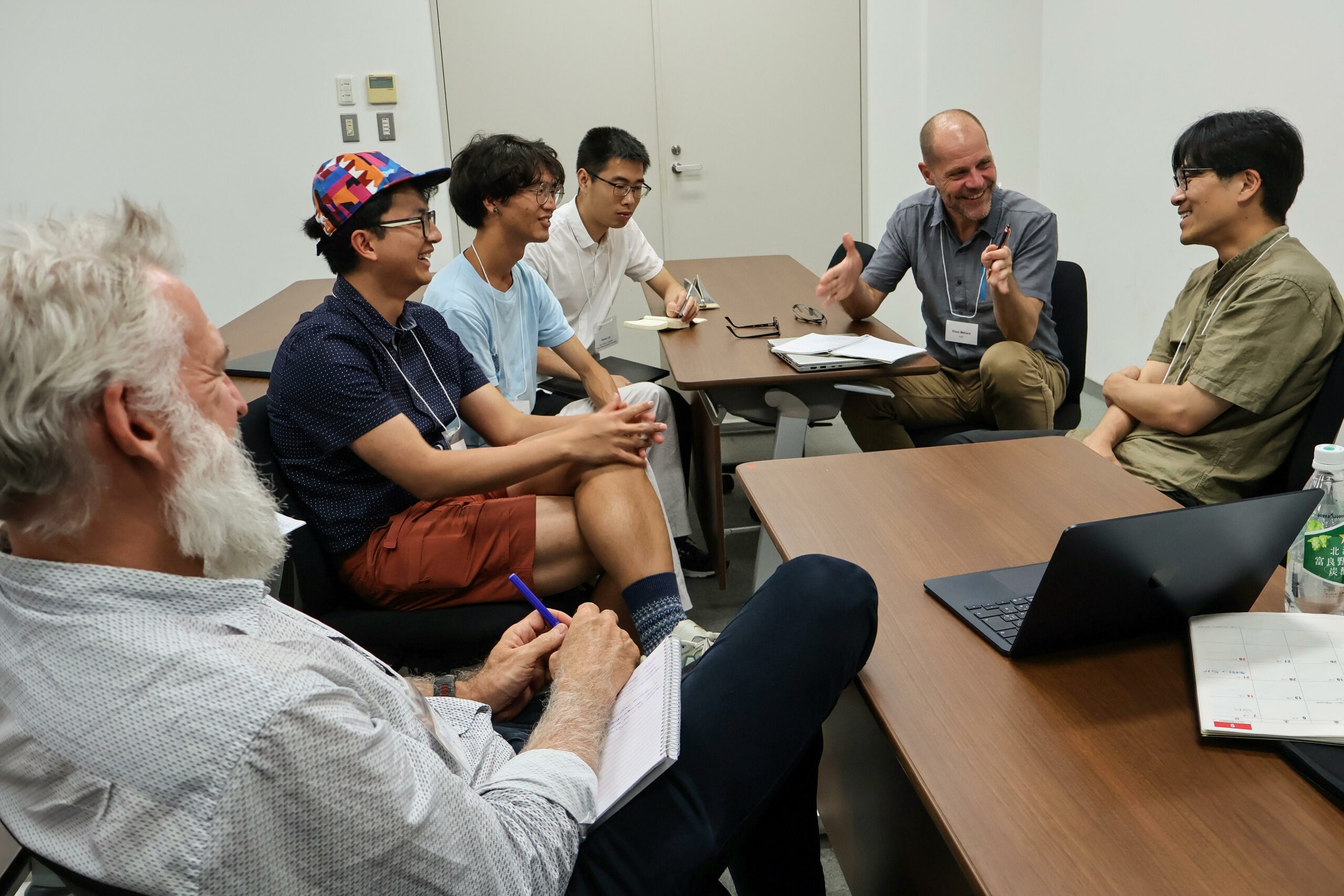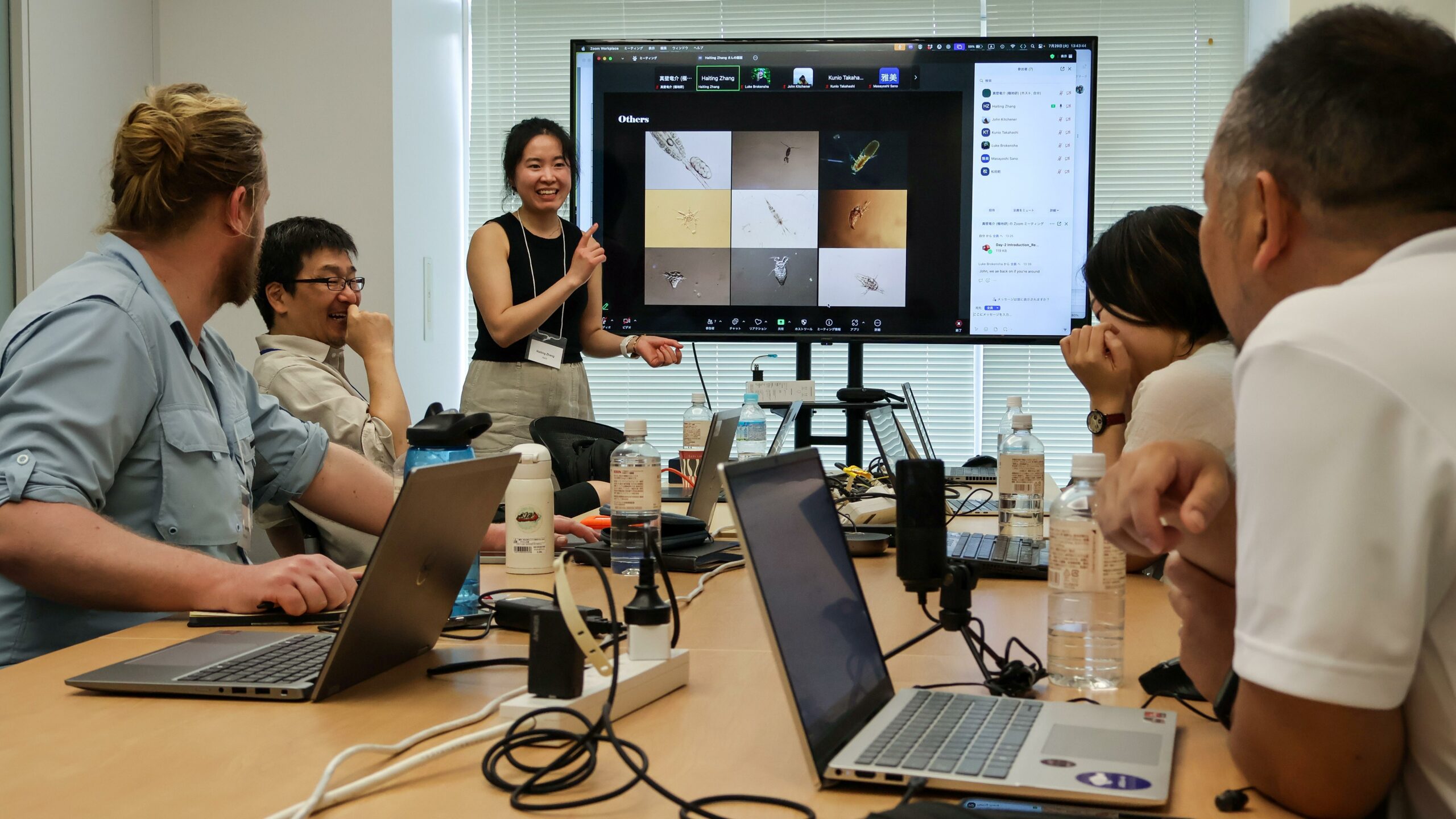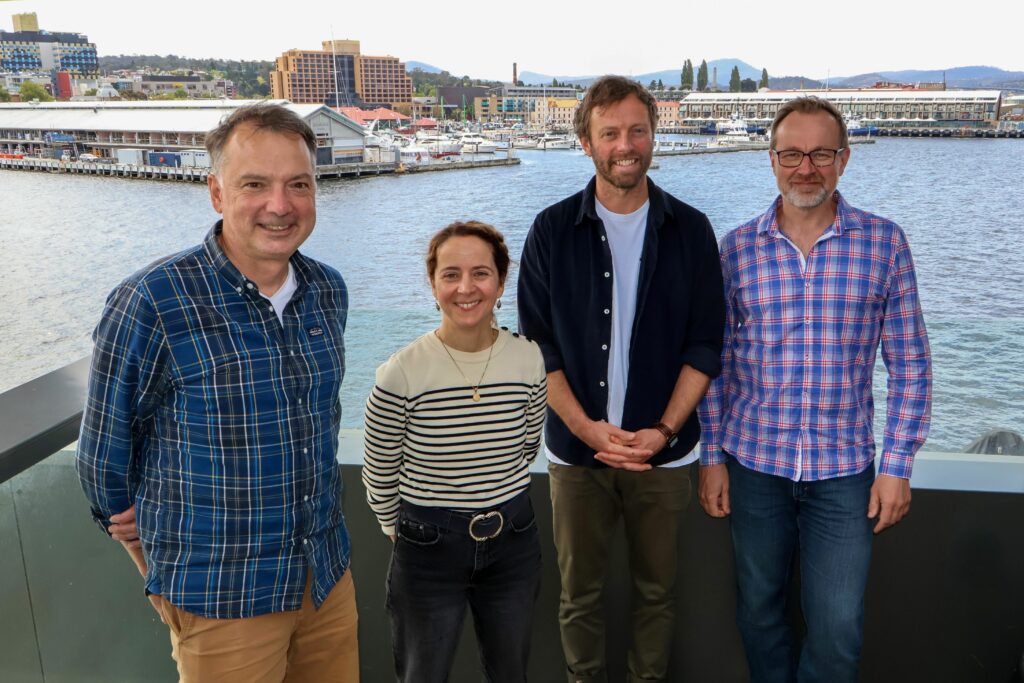“More than the sum of its parts”: Japan-Australia brains-trust charts future for Antarctic science
1 August 2025
Eighty world-leading scientists have mapped out the near-future of joint research between Japan and Australia in Antarctica and the Southern Ocean.
Experts from universities and government agencies, across a broad range of disciplines – including oceanography, biology, ecology, biogeochemistry, geology, sea ice, ice sheet modelling, logistics and atmospheric science – met from 29-30 July at the National Institute of Polar Research (NIPR) in Tokyo.
The meeting was funded by the Australian Department of Foreign Affairs and Trade (DFAT) through a grant to the Australian Antarctic Program Partnership (AAPP) at the University of Tasmania from the Australia-Japan Foundation (A-JF).
Attendees included Head of the Australian Antarctic Division, Emma Campbell, and Director-General of NIPR, Yoshifumi Nogi.
Co-organiser Dr Tony Press from the University of Tasmania said the outcome of the Australia-Japan Foundation Workshop on Antarctic Science 2025 was “more than the sum of its parts”.
“This was one of the most productive bilateral collaborations I’ve been involved with.”
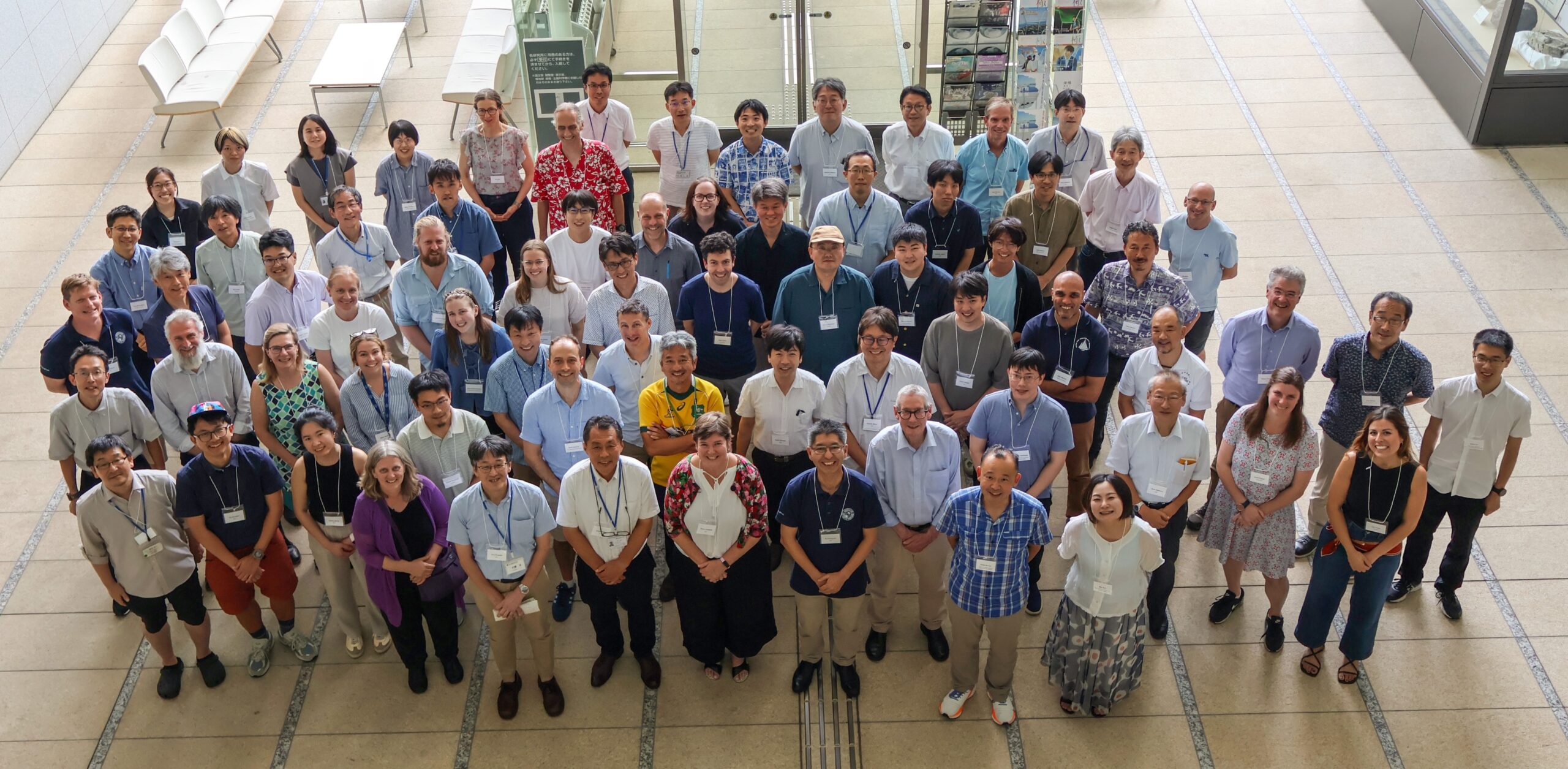
“Australia and Japan each have a long history of Antarctic exploration and science, going back to the early 20th century. Both nations became founding Parties of the Antarctic Treaty in 1959”, he said.
Although this was the fifth Australia-Japan meeting since 2009, it was the first since the Covid pandemic greatly disrupted Antarctic and Southern Ocean science programs.
“Our goal is to strengthen the Australia-Japan Antarctic relationship through collaborative research at a time when understanding Antarctica’s role in the global climate system is urgent”, Dr Press said.
“Much of our discussion highlighted the rapid climate-related changes we are witnessing in the Antarctic region, such as dramatic reductions in sea-ice extent and increasing contributions from the Antarctic ice sheet to global sea-level rise.”
“The scientists at the meeting are deeply motivated to carry out the urgent research needed to inform policy-making about actions required to avoid damaging and irreversible impacts of global heating.”
“While global geopolitical forces are impacting Antarctic governance, Australia-Japan relationships are strengthening”, he said.
Co-organiser and senior krill biologist Dr So Kawaguchi from the Australia Antarctic Division (who has co-organised all five workshops since 2009) said that East Antarctica is the natural region for science collaboration between Australia and Japan.
“A long section of the East Antarctic coast is bracketed by Australian and Japanese research stations serviced by our respective national science icebreakers Nuyina and Shirase.”
“Both nations are also advancing ambitious ice core drilling programs in the Antarctic interior to retrieve a continuous climate history of more than one million years.”
“This important meeting built new pathways between Australia and Japan in Antarctic science, where we explored how to add value to each other’s work, focus on the areas of greatest impact, and harness the capabilities of innovative and emerging technologies.”
“For example, strengthening long-term penguin monitoring and its coordination with at-sea krill surveys by both nations will provide important information for policy makers and the Commission for the Conservation of Antarctic Marine Living Resources to ensure the conservation of wildlife and their habitats under a changing climate”.
“An updated synthesis of the East Antarctic pelagic ecosystem using recent multidisciplinary ecological surveys will provide further opportunities for developing collaborative multinational research in future fieldwork campaigns”, Dr Kawaguchi said.
Sharing of equipment such as ships and marine sensors, as well as exchange of data and expertise, were discussed extensively at the workshop. A full communique will be released in the near future.
